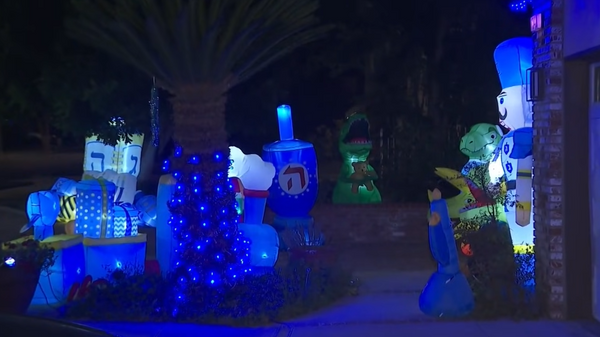
Discipline is one of the hardest parts of parenting—and in the heat of the moment, even the most loving parents can fall into habits that do more harm than good. Whether it’s out of frustration, exhaustion, or simply repeating what we were taught growing up, certain tactics get used way too often despite being ineffective or even damaging. The truth is, discipline should guide kids toward better choices, not punish them into obedience. Some of the most common tools parents use in the name of discipline are actually counterproductive. If we want to raise confident, emotionally healthy children, these ten approaches should be off the table.
1. Withdrawing Love or Affection
Using emotional withdrawal as a punishment sends a confusing and painful message to children. When parents withhold hugs, affection, or warmth to make a point, it teaches kids that love is conditional. This kind of discipline can leave long-lasting emotional scars and contribute to anxiety or low self-worth. Kids need to know they are loved no matter what—even when they mess up. Discipline should correct behavior, not make children question their place in your heart.
2. Public Shaming
Disciplining a child in front of others—whether it’s in the grocery store or on social media—might get immediate compliance, but it often comes at the cost of deep embarrassment. Shame doesn’t teach better behavior; it teaches fear and resentment. Children who are shamed in front of peers may develop social anxiety or withdraw altogether. Discipline works best when it’s private, respectful, and focused on learning. Preserving your child’s dignity is more powerful than a moment of control.
3. Yelling
Yelling can feel like a release in stressful moments, but it rarely leads to long-term behavior change. Kids tend to tune out raised voices or respond with fear, not understanding. Over time, frequent yelling can make children anxious or normalize aggressive communication. It also models poor conflict resolution, showing kids that loudness equals authority. Calm, clear communication is much more effective—and respectful.
4. Physical Punishment
Spanking and other forms of physical punishment may stop a behavior in the moment, but studies consistently show they are not effective for long-term discipline. Hitting teaches kids that problems can be solved with force and often leads to increased aggression or fear. It also damages trust between parent and child. There are better ways to teach consequences that don’t involve causing pain. Gentle but firm discipline builds understanding, not fear.
5. Taking Away Meals or Snacks
Using food as punishment sends the wrong message about both discipline and nutrition. Withholding meals can harm a child’s physical health and turn food into a source of control or shame. Children need nourishment to manage emotions and learn from their mistakes. If a child misbehaves at mealtime, it’s better to address the behavior separately. Food should never be tied to punishment—it’s a basic need, not a privilege.
6. Making Threats You Won’t Follow Through On
Empty threats may get short-term results, but kids quickly learn whether or not their parents actually mean what they say. Threats like “I’ll leave you here!” or “You’ll never get to go out again!” erode trust and make discipline feel like a bluffing game. Children thrive on consistency and clear boundaries. If a consequence isn’t something you’re willing or able to enforce, don’t say it. It’s better to set realistic expectations and stick to them.
7. Comparing Siblings or Other Kids
Telling a child they should behave more like a sibling or another child is not motivational—it’s damaging. Comparisons breed resentment, insecurity, and sibling rivalry. Every child is different and needs to be disciplined based on their own behavior, not someone else’s. The goal is to help kids grow into their best selves, not mirror someone else’s success. Keep discipline personal and focused on individual growth.
8. Humiliating Nicknames or Labels
Calling your child names like “lazy,” “brat,” or “bad kid” can cut deeper than you realize. Labels stick, and kids often start to believe the worst things said about them. Discipline should be about correcting actions, not attacking identity. When you label a child, you don’t leave space for them to change. Talk about behavior, not character, and always emphasize that mistakes are separate from who they are.
9. Making Them Feel Like a Burden
Saying things like “You’re driving me crazy” or “I can’t deal with you right now” may come out in frustration, but they tell kids they’re too much to handle. Children should never feel like they’re unwanted or a problem to be solved. These comments can stick in their minds and hurt their self-esteem. Instead of blaming the child, focus on the behavior that needs to change. Kids need to know that even when their actions are challenging, their presence is never too much.
10. Overusing Time-Outs Without Follow-Up
Time-outs can be useful in moderation, but when used as the only form of discipline, they quickly lose impact. Sitting alone in silence doesn’t teach much unless it’s followed up with a calm discussion. Kids need help understanding what they did wrong and how to make better choices next time. Discipline isn’t just about stopping behavior—it’s about guiding learning. Time-outs should be a reset, not a stand-alone punishment.
Discipline Should Teach, Not Tear Down
Effective discipline is rooted in teaching, not controlling. When we rely on fear, shame, or confusion to get quick results, we sacrifice long-term trust and emotional growth. Kids are more likely to listen and improve when they feel respected and understood. Replacing harmful habits with intentional, connected approaches makes discipline a tool for growth—not punishment. Every moment of correction is also a moment to strengthen your bond.
Have you caught yourself using one of these without realizing it? What have you changed in your discipline approach that worked better? Share in the comments!
Read More:
10 Creative Discipline Techniques That Don’t Involve Time-Out of Punishments
6 Times Parents Should Discipline in Public – Not Behind Closed Doors
The post 10 Things Parents Should NEVER Use as Discipline (But Still Do) appeared first on Kids Ain't Cheap.







